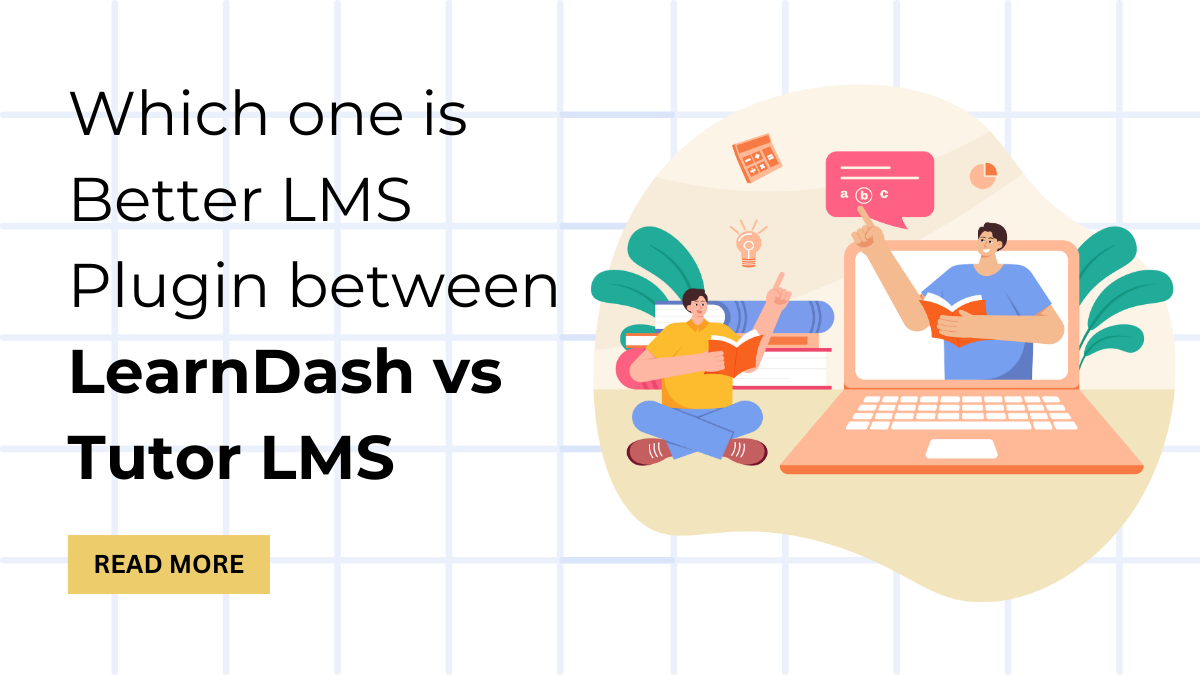Introduction:
You have a lot of LMS opportunities if you wish to build courses. While LearnDash is a well-known example, Tutor LMS is also similar. With the help of these WordPress plugins, you might develop and manage courses straight from the backend of your website. But the two systems differ in a few ways, so one could prove to be a better fit for you. Although we have been using Learndash vs Tutor LMS, there are a lot of appealing characteristics to the Tutor LMS. I’m utilising each platform in this guide to determine which one I believe is best. To determine which LMS to use, compare LearnDash vs. Tutor within my guide.
There is a tie there. For educators that wish to advance their courses, LearnDash is an excellent option because it has more capabilities and integrations. Yet since Tutor LMS has a free option, it’s a great option for those just starting out in classes and looking for ways to reduce costs. Tutor LMS is also an excellent option for those who are familiar with WordPress and are simpler to use.
LearnDash:
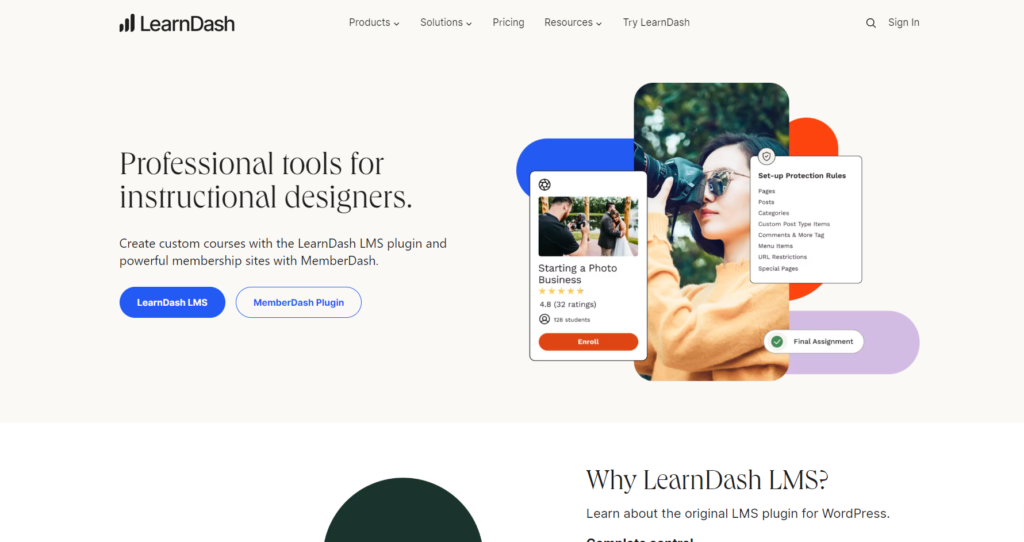
For a very long time, LearnDash served as my preferred LMS. Everything necessary to create an outstanding course is included in this LMS. Some of the multiple plugins that interface with LearnDash can be added in case there is a feature that LearnDash does not offer. LearnDash has served as a reliable LMS for many years as a result of this. The LMS LearnDash is customisable. It’s used by universities, businesses, businessmen, and various other training organisations. We merely used it for holding basic writing classes. To take your e-learning experience to the next level, integrating premium WordPress plugins with LearnDash can provide a wealth of advanced features and functionalities.
Advantages:
- Many add-ons, integrations, and plugins
- SCORM compliant
- Variety of features
Disadvantages
- Expensive
- This is not a free offer.
Features:
It would be difficult to go over every feature provided by LearnDash here due to its lengthy feature list. The salient features consist of:
- Compliance
- Custom development
- eCommerce
- Lessons
- Marketing
- Memberships
- Quizzes
But this does not imply that LearnDash’s features are of high calibre. For instance, I have difficulty utilising their membership platform. LearnDash interacts with a number of plugins that fail to offer a feature users need. Let’s explore more features for accurate discrimination of LearnDash vs Tutor LMS.
1. Course Development and Management:
All the assets required to produce an outstanding course are available on LearnDash. LearnDash is a WordPress plugin that offers quizzes, lessons, drip-feed classes, and more complex features. A noteworthy aspect of LearnDash is its course scheduling feature, which enables you to assign courses to students instantly.
My issue with LearnDash is that creating a course requires knowledge of WordPress. In order to create the course’s material and other settings, instructors have to navigate among several pages. I advise understanding WordPress before anything else if you’re new to it. In short, LearnDash has a lot of sophisticated features and content choices to help you construct amazing courses. The primary problem is that LearnDash can be challenging to use; therefore, if you’re a more seasoned WordPress user, this is a preferable choice.
2. Ease of Use:
To reiterate what was said in the section on creating courses, LearnDash is simple to use when you know how to use WordPress. LearnDash is a Blogger plugin; consequently, the vast majority of its features will be available on the backend of WordPress. There won’t be the majority of an adjustment period when you’ve used WordPress before.
It would be difficult for new customers when LearnDash’s structure for building courses was simpler. a website called WordPress for many years, I was able to do this with ease. The majority of LearnDash’s additional features are simpler when not used. From the backend, updating your lessons and plugins is simple, and the left-hand bar for navigation allows users to access everything.
3. Integrations:
LearnDash excels, especially when it comes to integrations and plugins. You may access an extensive plugin library with this platform, even if it has a lot of built-in functionality. The majority of these extensions are free. A complete list of their add-ons is available here.
The gamification extensions, like LearnDash Achievements, are my favourites. By adding a game-like aspect to your course, gamification makes learning enjoyable. When lessons and quizzes are finished, LearnDash Achievements gives points, and your students can earn badges.
LearnDash offers connections with WooCommerce so that you may sell your courses along with other eCommerce options. In order for instructors to take every significant credit card and currency, I also advise them to download Stripe.
4. eCommerce:
As mentioned before, LearnDash provides an extensive selection of eCommerce connections. WooCommerce, SamCart, ThriveCart, and Stripe are great options for improving your eCommerce capabilities. Stripe has been incorporated into the latest LearnDash versions. I advise utilising an external plugin like PaidMembershipsPro instead of LearnDash’s built-in features when you are interested in having a membership subscription.
In short, LearnDash provides an array of eCommerce capabilities and plugins that can improve the sales of your course. Membership subscriptions are something you can offer, but I suggest employing a plugin instead of their integrated memberships.
You can checkout this curated list of membership plugins for WordPress for integrating in your website to achieve subscription feature in your site.
5. Pricing
The cost of LearnDash is by far my primary concern. LearnDash is pricey to start. Relative to most rivals, their one-website licence starts at $199 per year, which is a higher price. This cost will increase when you wish to host additional websites. LearnDash doesn’t have a free plan, in contrast with Tutor LMS. They only provide a sample; there is not even a free trial. In short, LearnDash has a free plan, charges a greater cost than rivals, and only provides a demo as opposed to a trial.
Tutor LMS:
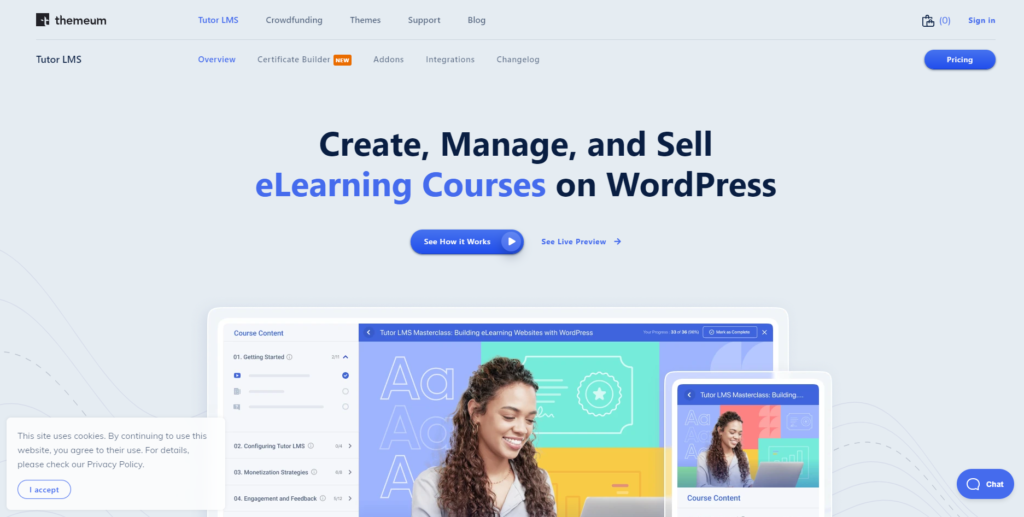
While the Tutor LMS and WordPress plugins are comparable, there are a few important differences. It includes a straightforward course development system and a plan that’s free, but it falls short in a few areas where LearnDash excels.
Advantages:
- Free plan.
- Easy to use.
- This is an excellent option for WordPress beginners.
- Options for lifetime licence.
Disadvantages:
- There is no compliance.
- Add-ons and plugins are absent.
- No assistance.
Features:
Learndash vs Tutor LMS all provide the same fundamental features. With Tutor LMS, you may create an excellent course, and numerous topics are suitable.
Emails and notifications are accessible to students. But this is the extent of the features. If you’re new to creating courses or just want to make a basic course, tutor LMS is a better choice. Tutor LMS provides the tools you need to build a superior course, but it lacks the technologically advanced capabilities that LearnDash purports to provide.
1. Course Creation and Management:
We like the curriculum development in Tutor LMS for LearnDash, even though it misses some of LearnDash’s abilities. Tutor LMS walks you through every step of creating a course and is incredibly user-friendly. Unlike LearnDash, you do not have to go between pages because the structure is quite straightforward.
Learndash vs Tutor LMS share a similar hierarchy. The following is the hierarchy:
- Course
- Topic
- Lesson
- Quiz
Although we want greater flexibility, keeping organisation simple You have two choices for creating your course: use an uploader plugin like Mammoth Docx Converter, or build it in the backend.
We really like the variety of quiz topic decisions; unlike many competitors, you may select matching pictures and flexible answers. Before posting your course, users can preview it by following the instructions. To make sure that it looks and works well for the learner, we advise doing this. Creating a course with the Tutor LMS will be simpler than with LearnDash. Users still get access to strong features, like more kinds of quizzes.
2. The Ease of Use:
As I’ve previously discussed, using Tutor LMS is really easy. Compared to LearnDash, their course design process is more organised, and their plugin is easy to use. Tutor LMS is therefore a better option for novice course developers and WordPress users.
They have some outstanding tutorials and demos that will make understanding their backend much easier. Though that is really a minor quibble, I wish the instructional material view was larger, like a regular WordPress blog. Building a Tutor LMS programme was a better experience for me overall than building a LearnDash course.
3. Integrations:
Unfortunately, although LearnDash has greater features than Tutor LMS, the free plan only allows a small number of connections. All they ask anyone to do is create an academy and be paid for it.
We noticed that the Tutor LMS has connections with WooCommerce, Elementor, Mammoth Docx Converter, and a few more. Users will need to pay for advanced integrations, such as those with BuddyPress or Zoom. Even though we enjoy using their advanced quiz builder, LearnDash has additional functions.
4. eCommerce:
PayPal is one of the connected payment methods that Tutor LMS provides. WooCommerce is also integrated with the free plan. Upgrading your plan unlocks more eCommerce integrations; however, the standard plan has limitations. Tutor LMS will also retain a portion of your earnings if you choose the free plan.
In summary, the free version of Tutor LMS includes a restricted amount of eCommerce capabilities and integrations; to access further features, users will need to upgrade. Also, under the free plan, Tutor LMS will deduct a portion of your earnings.
5. Pricing:
The free plan is what makes Tutor LMS so great. The free plan is a fantastic choice for people who just want a basic course and are new to creating courses, despite having limited features. Other than Tutor LMS taking a cut of your earnings, the trial version has no duration limits and other restrictions. The cost of an expensive course is the same as that of LearnDash; the first tier costs $199 a year, and the cost goes up when you plan on using more websites. I really like the lifetime price that Tutor LMS offers. We would want to pay a single price for every purchase and dislike subscription service pricing.
Which is better for you, Learndash vs Tutor LMS?
Here are a few more possibilities for you to consider:
1. Udutu:

Another platform that is ideal for small businesses and novice course makers is Udutu. They offer some of the most effective pricing options, to start. In addition to providing a free plan, their paid options are also very reasonably priced. Their ordinary plans are just a few dollars a month, but their premium plans reach up to thousands. Some of you should only budget for about $12 a year when the course has fewer than 1,000 users. There’s a learning process with their LMS, and Udutu doesn’t seem to have the finest assistance. In advance of purchasing this service, I recommend taking advantage of the free plan.
2. Matrix LMS:
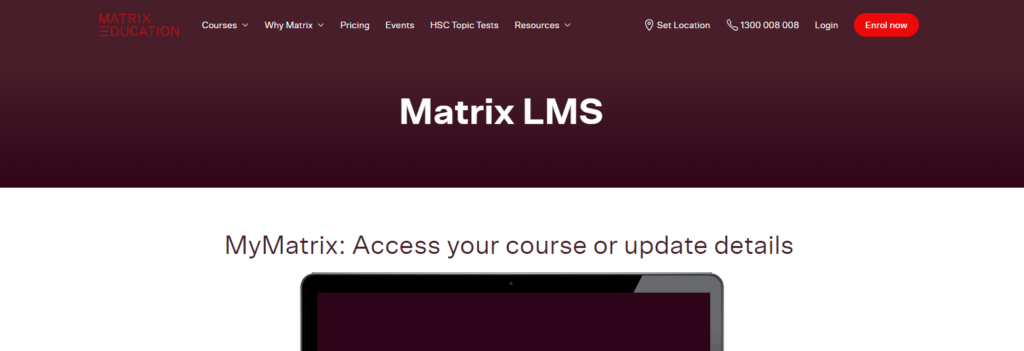
Businesses that want to conduct their own training for staff can use the Matrix LMS platform. Companies may easily create, supervise, and conduct educational programs for every employee. Their platform appears to be quite stable, with very few problems. I can’t say the same for the app, though; although we like that they have a mobile training alternative, it is not very functional. The design of Matrix LMS seems a little outdated to me as well.
3. SmarterU LMS:
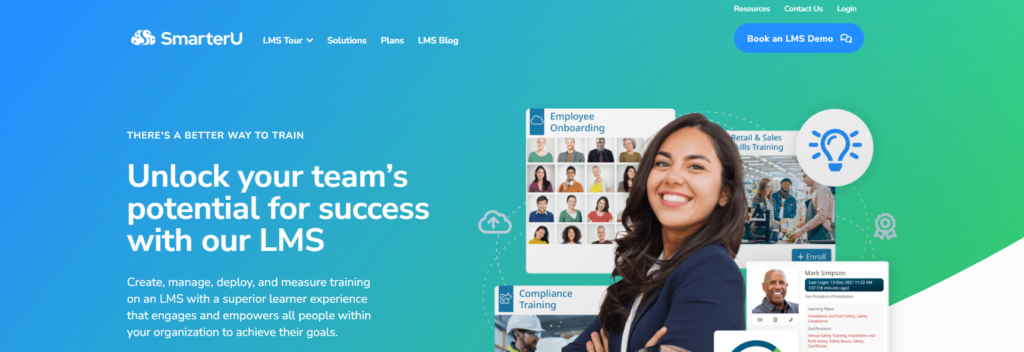
One of the most sophisticated LMS systems I’ve heard of is SmarterU LMS. They have sophisticated grading features, and their whole backend loads rapidly and is user-friendly. Their support team is excellent and quick to get back to you should you ever come into trouble. The cost is the only drawback. $7K as the initial cost per year for plans, LearnDash is even more pricey. For this reason, we simply recommend this system to businesses in need of innovative education programmes.
Conclusion:
In the realm of Learning Management Systems (LMS), the choice between LearnDash and Tutor LMS represents a crucial decision for educators and institutions seeking to deliver impactful online learning experiences. Both platforms boast powerful features, user-friendly interfaces, and extensive customization options, making them formidable contenders in the e-learning arena. As educators weigh their options, the inclusion of a comprehensive WordPress theme bundle further adds value to the equation.
LearnDash has long held its position as a leader in the WordPress LMS landscape. Its robust feature set, including advanced quiz capabilities, drip-feed content delivery, and seamless integration with third-party plugins, provides educators with a versatile toolkit. The platform’s reputation for scalability and reliability makes it an excellent choice for institutions looking to grow and evolve their online learning initiatives over time.
Tutor LMS, on the other hand, brings innovation to the table, challenging the status quo with a focus on simplicity and user-friendly design. With features like a frontend course builder, advanced quiz configurations, and built-in video conferencing, Tutor LMS caters to those who prioritize a modern and intuitive learning environment. Its commitment to ease of use makes it an attractive option for educators aiming to streamline course creation and management.
A noteworthy addition to this dynamic comparison is the inclusion of WordPress theme bundles tailored for LMS platforms. These bundles often include themes specifically optimized for LearnDash vs Tutor LMS, ensuring a seamless and visually appealing integration. The themes within these bundles typically come with customizable layouts, responsive design, and compatibility with essential plugins, offering educators a cohesive and aesthetically pleasing online presence.
In conclusion, whether opting for the established excellence of LearnDash or the innovative simplicity of Tutor LMS, the inclusion of a WP theme bundle can significantly enhance the overall online learning experience. The right choice ultimately depends on the specific goals, preferences, and technical requirements of the educators and institutions venturing into the dynamic world of digital education.

